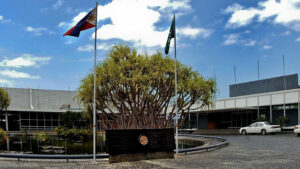THE GOVERNMENT and the International Rice Research Institute (IRRI) hope to designate a 50-hectare site to produce seed for rice with characteristics like a low glycemic index (GI) and protein enrichment, which they said holds the promise of boosting farmer incomes.
“That seed production is for farmers to test this material in their fields to see how it performs and if it performs, to begin to scale those operations,” IRRI Director General Yvonne Pinto told reporters.
IRRI first unveiled the low and ultra-low GI rice varieties project to President Ferdinand R. Marcos, Jr. in 2023.
Most of the rice varieties sold in Philippine markets including Dinorado have GI levels of 70-72, which are considered high and can increase the risk of Type 2 Diabetes.
A low GI level for rice is less than 59 and ultra-low less than 45.
Ms. Pinto said aside from diabetes concerns, low-GI and high-protein rice is of “importance also in situations where you are delivering humanitarian aid.”
“The level of protein in those contexts is generally much lower, and it is more difficult to deliver,” she noted.
IRRI’s ultra-low GI rice “could be suitable as an ingredient in the manufacturing industry,” creating “food-processing opportunities,” she added.
Ms. Pinto said the actual cost of the seed for the new varieties is no more expensive than the seed Filipino farmers are currently using.
If the population values healthier options, the new varieties could earn farmers a “premium price.”
“The sale price will be higher because there is a willingness to pay in the market and that will be a net benefit for the farmers.”
Ms. Pinto said the traits responsible for the low GI rice were identified from IRRI’s gene bank in the Philippines.
The gene bank is the largest of its kind in the world, holding over 132,000 varieties from 132 countries. — Kyle Aristophere T. Atienza

